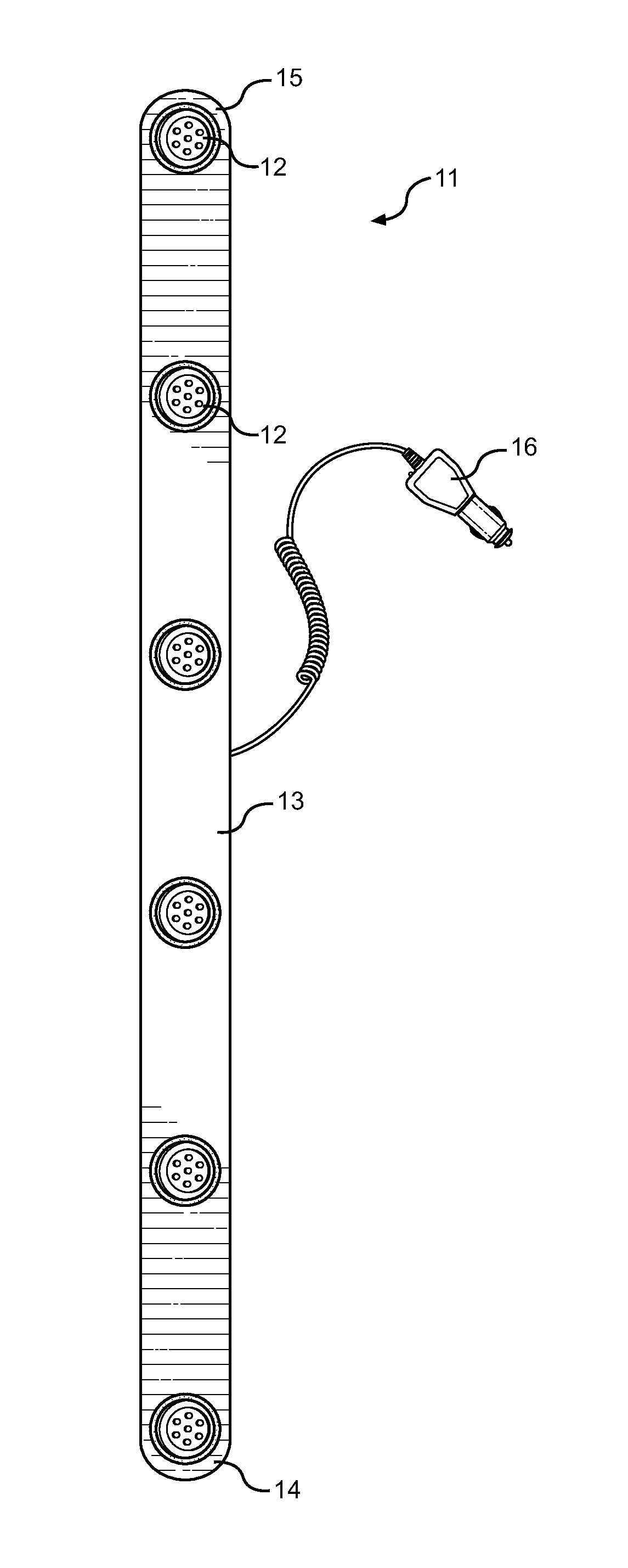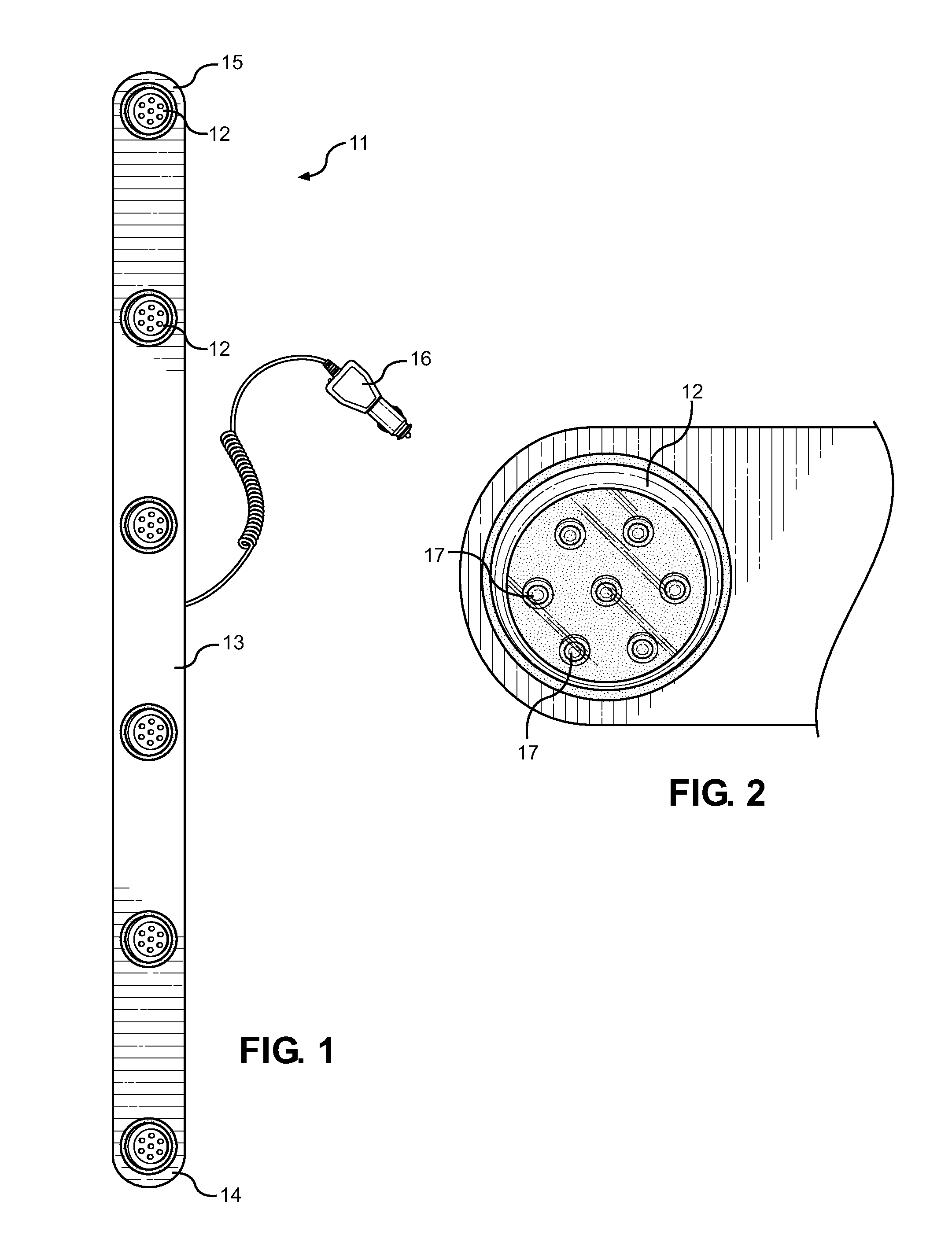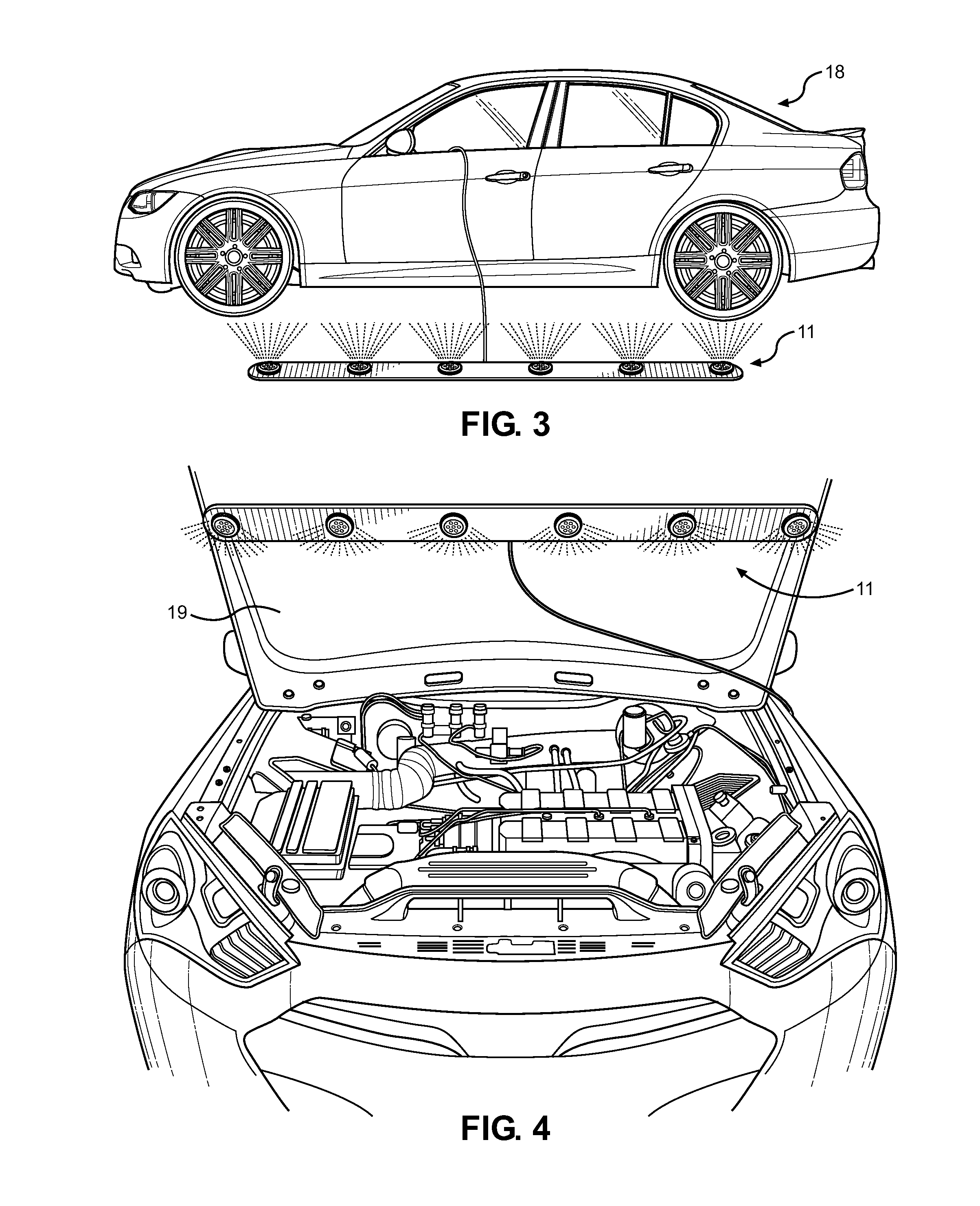Vehicle Hazard Light Strip
a technology for hazard lights and vehicles, applied in the field of vehicle emergency lighting, can solve the problems of affecting the safety of users, affecting the safety of drivers, and affecting the safety of disabled vehicles,
- Summary
- Abstract
- Description
- Claims
- Application Information
AI Technical Summary
Benefits of technology
Problems solved by technology
Method used
Image
Examples
Embodiment Construction
[0030]Reference is made herein to the attached drawings. Like reference numerals are used throughout the drawings to depict like or similar elements of the vehicle hazard light strip. For the purposes of presenting a brief and clear description of the present invention, the preferred embodiment will be discussed as used for assisting a motorist who is pulled over on the side of a dark road with a disabled vehicle. The figures are intended for representative purposes only and should not be considered to be limiting in any respect.
[0031]Referring now to FIG. 1, there is shown a top view of the preferred embodiment of the vehicle hazard light strip of the present invention. The light strip 11 is shown as having one or more clusters 12 of LEDs. In the embodiment shown, the clusters 12 are arranged on a support 13 having a first end 14 and a second end 15. However, other embodiments of the present invention include a support having alternative shapes, such as an L-shape for illuminating ...
PUM
 Login to View More
Login to View More Abstract
Description
Claims
Application Information
 Login to View More
Login to View More - R&D
- Intellectual Property
- Life Sciences
- Materials
- Tech Scout
- Unparalleled Data Quality
- Higher Quality Content
- 60% Fewer Hallucinations
Browse by: Latest US Patents, China's latest patents, Technical Efficacy Thesaurus, Application Domain, Technology Topic, Popular Technical Reports.
© 2025 PatSnap. All rights reserved.Legal|Privacy policy|Modern Slavery Act Transparency Statement|Sitemap|About US| Contact US: help@patsnap.com



